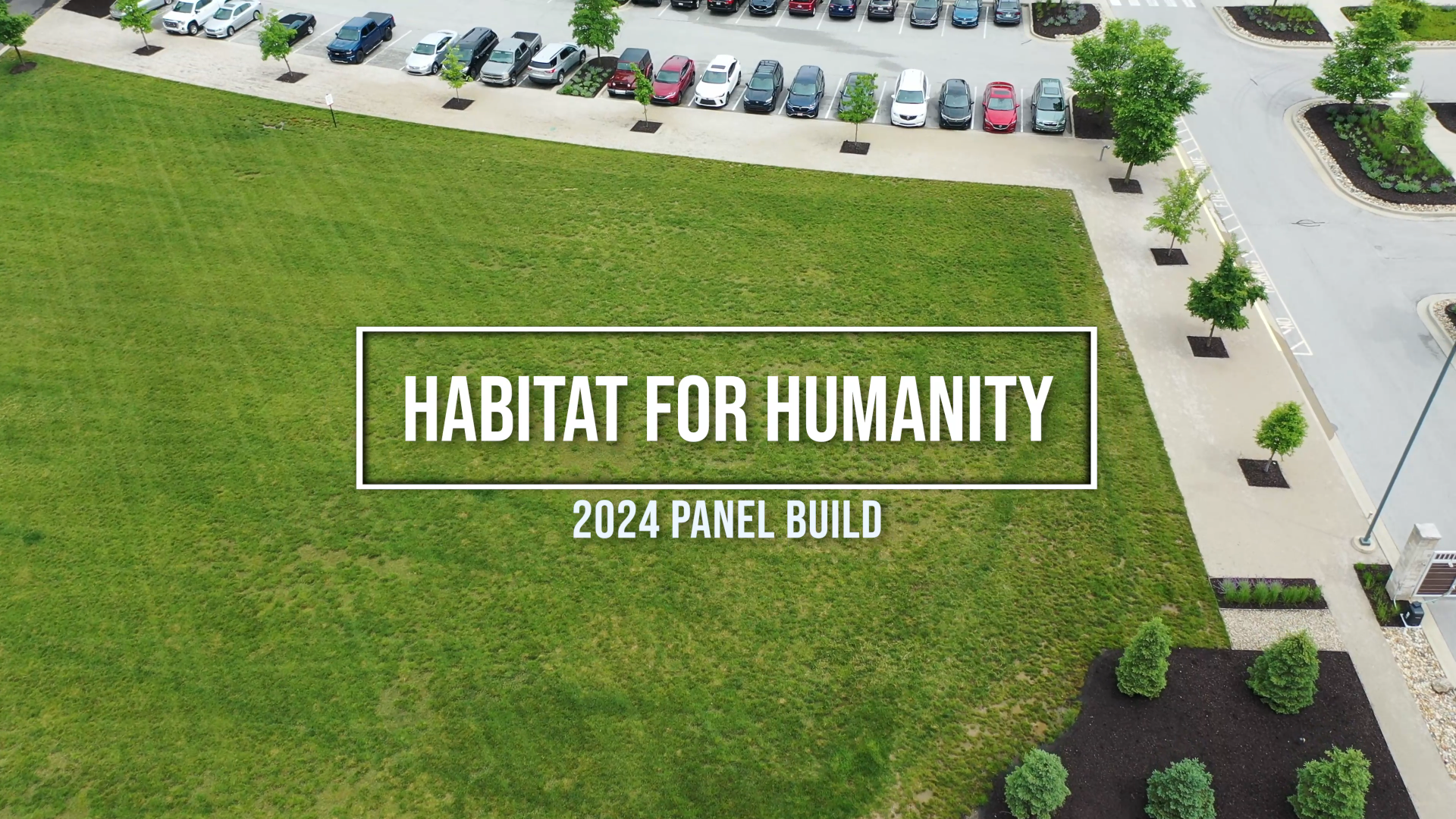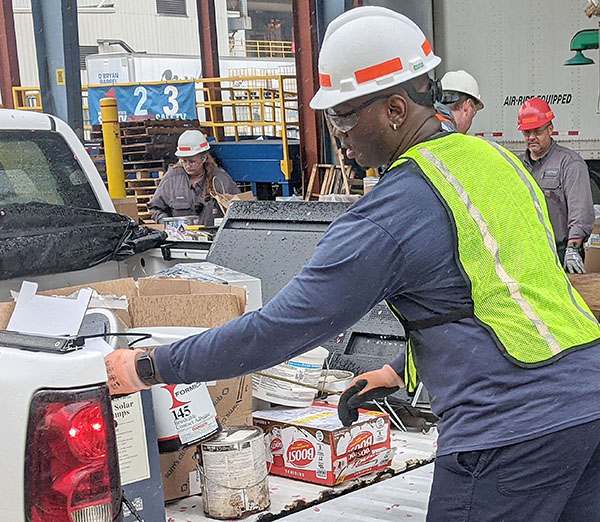Signage Requirements of the Generator Improvements Rule
Authored by Angie Martin, Terry Ferril and Elizabeth Dillon.
On May 30, 2017 the EPA’s Hazardous Waste Generator Improvements Rule became effective in Alaska and Iowa. New Jersey and Pennsylvania have already picked up the new rule, as well. Over the next 12-24 months the remaining 44 states will have the opportunity to either incorporate the new rule in its entirety or piecemeal the rule contents, as long as each state adopts the more stringent parts of this new rule. One of the more stringent aspects of the new rule is the use of “No Smoking” signs for Large Quantity Generators (LQGs) with ignitable and/or reactive wastes.
40 CFR 262.17 (a)(1)(vi)(B) of the new rule states the following (emphasis added):
The large quantity generator must take precautions to prevent accidental ignition or reaction of ignitable or reactive waste. This waste must be separated and protected from sources of ignition or reaction including but not limited to the following: Open flames, smoking, cutting and welding, hot surfaces, frictional heat, sparks (static, electrical, or mechanical), spontaneous ignition (e.g., from heat-producing chemical reactions), and radiant heat. While ignitable or reactive waste is being handled, the large quantity generator must confine smoking and open flame to specially designated locations. ‘‘No Smoking’’ signs must be conspicuously placed wherever there is a hazard from ignitable or reactive waste.
For individuals who have been working in the hazardous waste industry for the last 20 years or so, you may recall that “No Smoking” signs have been raised as a non-compliance issue by some state inspectors. In fact, many state agencies have been enforcing a reference to a note indicated in the existing regulations. The regulations (§265.176) did not require “No Smoking” signs as a requirement for LQGs, only for treatment, storage and disposal (TSD) facilities (§265.17(a)). Clarification was requested and an EPA letter of interpretation was sent to Rosemary Cantwell at the Indiana Department of Environmental Management (IDEM) on June 8, 1995. This letter (RCRA online #14036) clarifies that signs are only a requirement of interim status and permitted TSD facilities not LQGs. It additionally states that IDEM could not issue a notice of violation based on a comment in the regulations if the generator was not otherwise required to comply. In other words, state regulators could not enforce a reference to a note. It is important to note at this time that some states have written into their own regulations that “No Smoking” signs are required for LQGs who have ignitable or reactive hazardous wastes. So while this new regulation may have to be adopted in some states, it may already be a requirement in others (i.e., Alabama, Arizona, Connecticut, Massachusetts, Minnesota, New Hampshire Rhode Island, Vermont).
Who does this affect? This new regulation will only affect LQGs who have ignitable or reactive hazardous wastes. Ignitable hazardous wastes are D001 characteristic wastes, or K or F listed wastes that have an “I” in the third column (i.e. F003, F005, K108, K171, K172). This also includes P and U listed wastes (virgin or obsolete chemicals) that also have an ignitable characteristic. You can refer to the product’s Safety Data Sheet (SDS) as to the flashpoint (<140˚F qualifies as D001), but you must verify that the flashpoint was conducted as a “closed cup” test. Reactive (D003) hazardous wastes are those that:
- Are normally unstable or can change violently without a detonating;
- React violently with or form potentially explosive mixtures with water;
- When mixed with water, generate toxic gases, vapors or fumes;
- Generate toxic gases, vapors or fumes and is a cyanide or sulfide bearing waste exposed to pH conditions between 2 and 12.5 s.u.;
- Are capable of detonation or explosive reaction if subjected to a strong initiating source or if heated under confinement;
- Are readily capable of detonation or explosive decomposition or reaction at standard temperature and pressure;
- Are a forbidden DOT Class 1.1, 1.2 or 1.3 explosive; and/or
- Have an “R” in the third column of K or F listed wastes, or in parentheses for P- or U-listed wastes.
- So what does this mean for LQGs moving forward? Based on past experiences, we anticipate that facility audits will likely include a line item for proper signage. The good news is that this requirement is an easy one to meet and maintain.
Where do you need signs? We recommend you begin by doing a facility walkthrough to create/review your hazardous waste areas where ignitable or reactive wastes are present. Such areas may include those where the waste is accumulated. Doing a facility walkthrough with this specific goal in mind will give you a fresh perspective on where signage is required.
What kind of signs do you need? Select signs that are large and have easily-readable print even from a distance. Given your workforce, signs in multiple languages may be necessary. Signs should be visible upon entering the area where the reactive and/or ignitable wastes are present and that routine operations in the area will not cause the sign to be blocked from sight (e.g., a parked forklift at the end of a shift).
Finally, make sure the signs are checked regularly to ensure they are still solidly mounted, undamaged, and conspicuous. You may want to incorporate this into your weekly inspection checklist. Hint – think like an auditor as you evaluate the areas and signs.
We hope you find these tips helpful as you navigate this new requirement. If you would like to talk to us about facility-specific strategies, please contact your local representative or reach out via our website.
More News From Heritage
-
10/14/24
Heritage Environmental Services Announces Timothy Thomas as Chief Operating Officer
Heritage Environmental Services (“HES”), an EQT Infrastructure portfolio company, announced today that Timothy Thomas will join the organization as Ch
-
10/1/24
Heritage Environmental Services Complete Acquisition of EBV from General Dynamics
Heritage Environmental Services, an EQT Infrastructure portfolio company, has completed the acquisition of EBV from General Dynamics.
-
7/31/24
PFAS Regulations: Is 6 the Magic Number?
Learn more about the current and proposed regulation for PFAS and what they mean from our Chief Sustainability and Innovation Officer, Angie Martin.
-
6/27/24
Heritage Environmental Services to Acquire EBV from General Dynamics
Heritage Environmental Servicess, an EQT Infrastructure portfolio company, will acquire EBV from General Dynamics
-
6/13/24
Meet The Facilities – East Liverpool
An inside look at our incineration facility located in East Liverpool, OH
-
5/24/24
Habitat for Humanity 2024
Heritage hosted our 14th annual Habitat for Humanity build this month, partnering with over 50 employees from various THG companies.
-
5/6/24
Date set for the household hazardous waste collection in East Liverpool, Ohio
-
3/12/24
Equal Pay Day – Spotlighting Our Female Drivers








